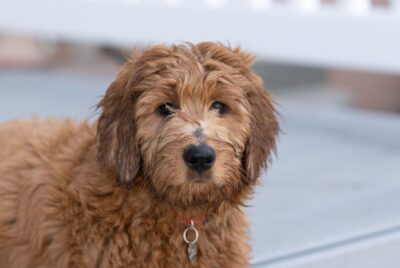Why Chocolate Goldendoodles Make the Perfect Family Pet
The Allure of the Chocolate Goldendoodle
As a dog enthusiast and advisor, I can affirm that picking a dog breed suitable for your family is quite a challenge. Amidst the variety of breeds, the Chocolate Goldendoodle stands out, owing to its irresistible charm and amiable nature. But, what makes them so special?
Understanding the Chocolate Goldendoodle: Breed Information
History of the Goldendoodle
Goldendoodles are a designer breed, a mix of Golden Retrievers and Poodles, becoming popular since the 1990s. The Chocolate variant of this breed gets its distinctive color from specific Poodle genes.
Characteristics of the Chocolate Goldendoodle
Chocolate Goldendoodles, typically medium to large dogs, are known for their wavy, hypoallergenic coats and expressive eyes. They are energetic, intelligent, and affectionate, showing an exuberant love for life.
Why Chocolate Goldendoodles are Perfect for Families
Tempered Behavior: Ideal for Children
These dogs are exceptionally patient and gentle, making them an excellent companion for children. Their tolerant nature and energy match children’s playful antics perfectly.
Adaptability: Perfect for Active Families
If you’re an active family that loves outdoor activities, then a Chocolate Goldendoodle fits right in! They are adaptable, thriving in various environments – be it a bustling city or a serene countryside.
Sociable Nature: Great for Homes with Other Pets
Chocolate Goldendoodles get along wonderfully with other pets. Their sociable and non-aggressive nature allows for harmonious co-existence in multi-pet households.
Real-life Stories of Families with Chocolate Goldendoodles
The Jenkins Family
The Jenkins family couldn’t imagine life without their Chocolate Goldendoodle, Bella. Bella helped their young son, shy and reserved, blossom into a more confident, sociable individual.
The Peterson Family
The Petersons, living in a city apartment, found the adaptable nature of their Goldendoodle, Max, incredibly beneficial. Max comfortably adjusted to city life, bringing joy and companionship to their home.
The Suarez Family
The Suarez family already had two pets when they brought home Coco, a Chocolate Goldendoodle. They were amazed at how Coco easily befriended their other pets, creating a harmonious pet-family.
Making a Home for a Chocolate Goldendoodle: Tips for New Owners
Proper Care and Training
Proper care is crucial to your Goldendoodle’s wellbeing. Early socialization, obedience training, and positive reinforcement techniques work best. Remember, they’re intelligent dogs who respond well to stimulating mental exercises.
Adequate Exercise and Diet
Chocolate Goldendoodles are energetic dogs and require regular exercise. A balanced diet is equally important, ensuring they receive all necessary nutrients.
The Irresistible Chocolate Goldendoodle
In conclusion, Chocolate Goldendoodles are more than just pets; they’re companions that seamlessly blend into your family, bring immense joy, and make life more exciting. Their temperament, adaptability, and sociable nature make them perfect family pets. So, if you’re considering welcoming a new pet into your home, the Chocolate Goldendoodle is indeed a remarkable choice!
Frequently Asked Questions (FAQs)
How big do Chocolate Goldendoodles get?
Depending on their specific lineage, Chocolate Goldendoodles can vary in size. Generally, they’re a medium to large breed, weighing between 50 to 90 pounds.
Are Chocolate Goldendoodles hypoallergenic?
Yes, like all Goldendoodles, the Chocolate variant is hypoallergenic, making them suitable for families with allergies.
How often do Chocolate Goldendoodles need exercise?
Being energetic dogs, Chocolate Goldendoodles need regular daily exercise to keep them healthy and happy. This can include walks, runs, or play sessions in the yard.
What is the lifespan of a Chocolate Goldendoodle?
With proper care and a healthy lifestyle, Chocolate Goldendoodles can live between 10 to 15 years.
Are Chocolate Goldendoodles easy to train?
Absolutely! Their intelligence and eagerness to please make them highly trainable. However, remember that consistent, positive reinforcement techniques work best with this breed.




